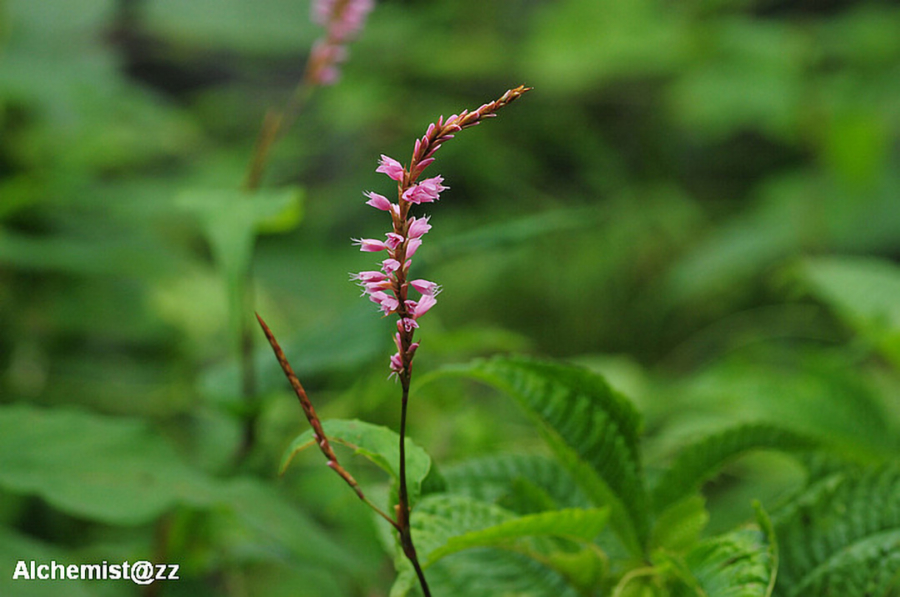- Scientific Name: Bistorta amplexicaulis (D.Don) Greene var. sinense (Forbes & Hemsl. ex Steward) comb. ined.
- Ref: provisionally accepted name
- Synonyms: Polygonum amplexicaule D. Don var. sinense Forb. & Hemsl. ex Stew., Bistorta amplexicaulis (D.Don) Greene subsp. sinensis (Forb. & Hemsl.) Soják
- English Common Name: Chinese red bistort
- Chinese Common Name: 中华抱茎蓼 Zhōnghuá bàojīng∙liǎo, 中华抱茎拳参 Zhōnghuá bàojīng quánshēn
- Family: Polygonaceae
- Genus: Bistorta
- Distribution: Grassy slopes, forests margins; 1200-3000 m. Gansu, Hubei, Hunan, Shaanxi, Sichuan, Yunnan [Bhutan, India, Nepal, Pakistan].
- Photo: Mt. Emei, Sichuan
Herbs perennial. Rhizomes horizontal, purple-brown, large, ca. 1.5 cm. Stems erect, 40-100 cm tall, robust, branched. Basal leaves long petiolate; petiole 5-10 cm; leaf blade greenish abaxially, green adaxially, ovate or oblong-ovate, 4-10 × 2-5 cm, abaxially sometimes pubescent along veins, adaxially glabrous, base cordate, margin slightly revolute, apex long acuminate. Cauline leaves shortly petiolate; leaf blade narrowly ovate, smaller; uppermost leaves subsessile or clasping; ocrea brown, tubular, 2-4 cm, membranous, dehiscent at base, not ciliate. Inflorescence lax, 2-4 cm, 1-1.3 cm in diam.; bracts brown, ovate, membranous, each 2- or 3-flowered. Pedicels longer than bracts, slender. Perianth red, 5-parted; Tepals narrowly elliptic, 3-4 × 1.5-2 mm. Stamens 8. Styles 3, free; stigmas capitate. Achenes slightly exceeding persistent perianth, black-brown, shiny, ellipsoid, trigonous, 4-5 mm, tapered at both ends. (Flora of China)
